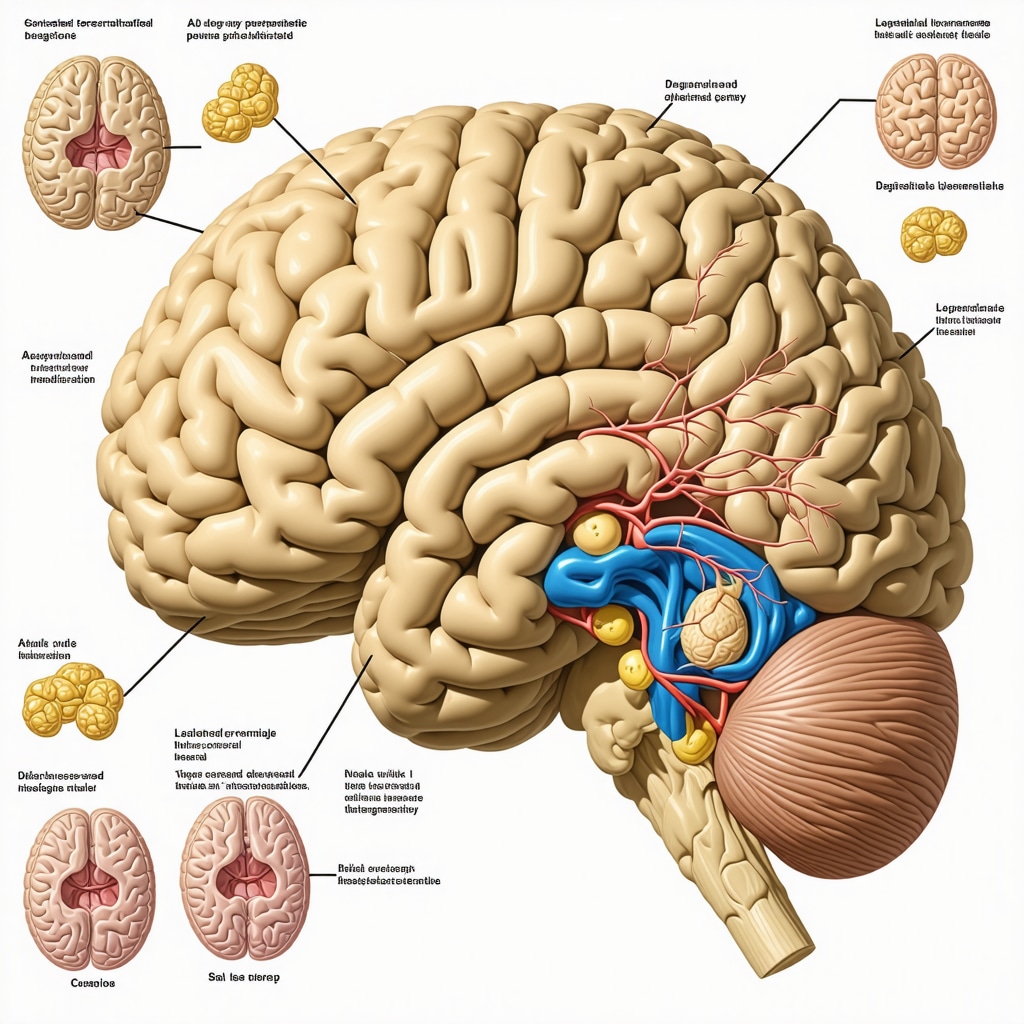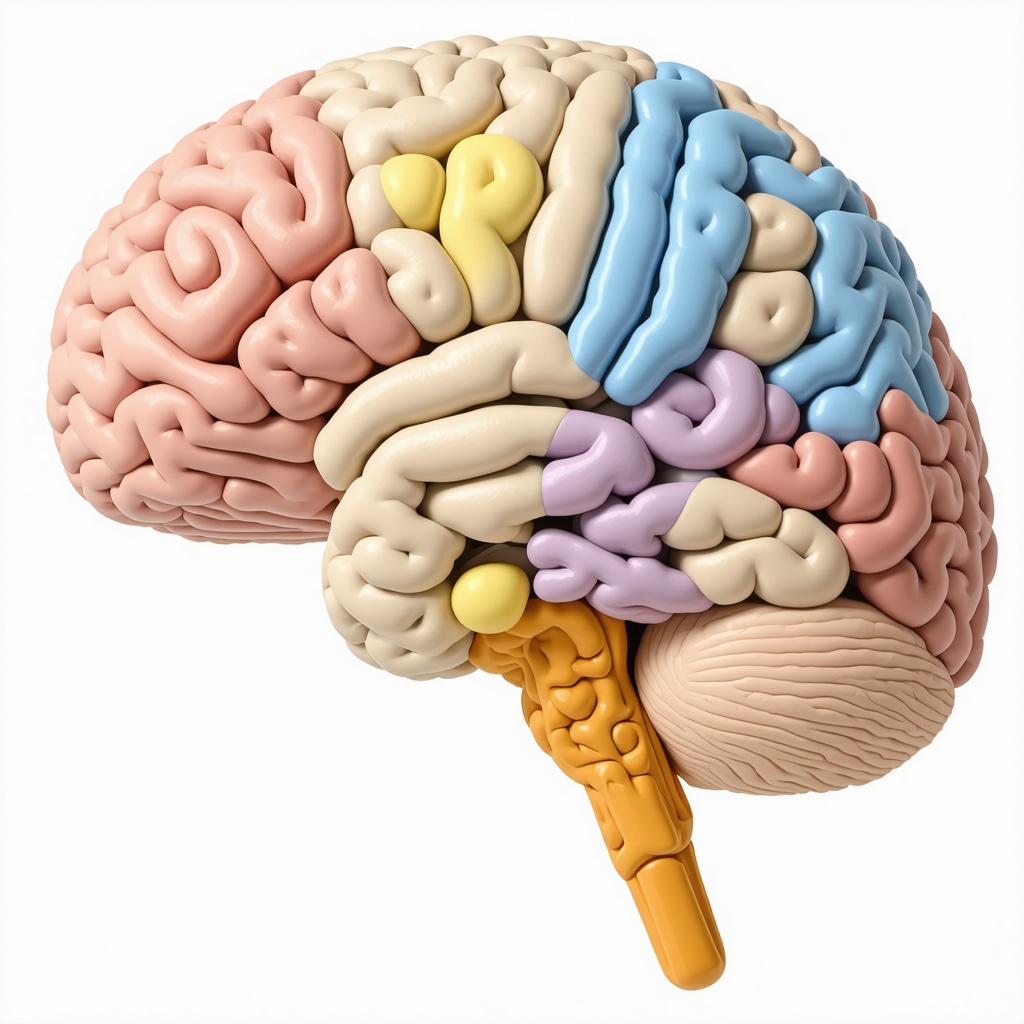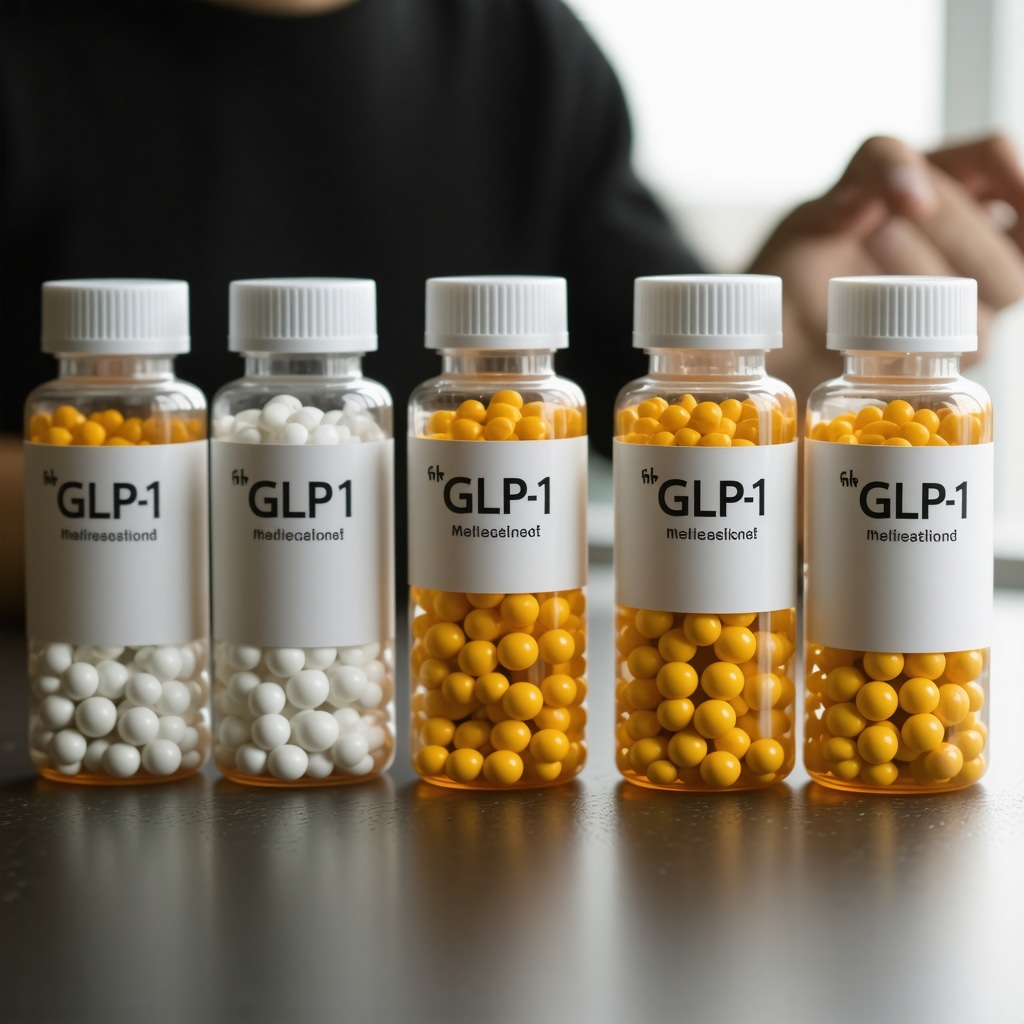Why Are GLP-1 Medications the Talk of the Town in Weight Loss Circles?
Imagine a weight loss breakthrough that feels less like a battle and more like a guided journey — that’s the buzz around GLP-1 weight loss medications these days. These innovative drugs mimic a natural hormone called glucagon-like peptide-1, which plays a starring role in regulating appetite and blood sugar. Suddenly, shedding pounds isn’t just about willpower; it’s about smart science giving your body a little nudge. But with options like semaglutide and tirzepatide stealing headlines, how do you navigate the maze and choose what’s right for you?
Picking Your GLP-1 Partner: Semaglutide, Tirzepatide, or Something Else?
Each GLP-1 medication has its own flavor — semaglutide, for example, has earned fame for its impressive results and FDA approval for weight management. Tirzepatide is the new kid on the block, offering a dual-action approach that’s turning heads in the medical community. The choice can feel like picking a favorite child (though hopefully less stressful!). Your ideal match depends on your health profile, goals, and how your body responds.
Is There a One-Size-Fits-All Answer in GLP-1 Weight Loss Medications?
Short answer: no. Longer answer? Weight loss is a deeply personal experience influenced by genetics, lifestyle, and even your daily schedule. What works wonders for one might be a dud for another. That’s why consulting with a knowledgeable healthcare provider is non-negotiable. They can tailor a plan that fits your unique needs, whether that means starting with semaglutide or exploring alternatives.
Side Effects and Benefits: The Good, the Bad, and the Manageable
Let’s not sugarcoat it (pun intended) — GLP-1 meds come with their share of side effects, like nausea or digestive changes. But many users find these manageable and temporary compared to the long-term benefits of reduced hunger and improved metabolic health. Understanding these trade-offs upfront can make your journey smoother and your expectations realistic.
For a deeper dive into the benefits and side effects, check out this insightful guide that walks you through what to expect when starting GLP-1 therapy.
Why Not Just Go It Alone? The Power of Professional Guidance
Trying to self-prescribe or jump onto the latest weight loss trend without medical guidance is like navigating a maze blindfolded. The stakes are high, and your health deserves better. Doctor-led fat loss plans not only increase success rates but also ensure safety and sustain results over time. Curious how medical experts craft these personalized plans? Explore this comprehensive resource for expert-backed insights.
Ready to Take the Next Step? Your Weight Loss Journey Awaits
If you’re intrigued by the potential of GLP-1 weight loss medications and want to see if you qualify, consider starting with a simple online consultation. Telemedicine has revolutionized access to prescription weight loss drugs, making expert advice more reachable than ever. Learn more about how to qualify for these medications and take control of your health journey.
Remember, every success story starts with a single step — or in this case, a well-informed choice. What’s your experience with GLP-1 medications? Share your thoughts in the comments below or connect with others navigating the same path.
For those interested in the science behind these medications, the National Institutes of Health offers a thorough review of GLP-1 receptor agonists and their role in obesity treatment.
Optimizing Your GLP-1 Therapy: Beyond the Basics
While GLP-1 medications like semaglutide and tirzepatide have transformed the landscape of weight loss, their true potential unfolds when integrated with personalized lifestyle strategies. Medical experts emphasize that combining these drugs with tailored nutrition and physical activity plans amplifies fat loss and metabolic improvements. This synergy not only accelerates results but also fosters sustainable habits, preventing the common pitfall of weight regain after discontinuation.
Understanding the pharmacokinetics of each medication can further refine treatment. For example, the half-life and dosing frequency impact adherence and side effect profiles, which should be discussed with your healthcare provider to enhance your experience. For those curious about how GLP-1 medications interact with other weight loss interventions, exploring comparative insights on semaglutide and alternatives offers valuable perspective.
Unpacking the Psychological Impact: How GLP-1 Medications Influence Behavior
Emerging research suggests that GLP-1 receptor agonists may do more than suppress appetite—they could modulate reward mechanisms linked to food intake. This neurobiological effect helps reduce cravings and emotional eating, which are often major barriers in weight management. Patients frequently report a shift in their relationship with food, moving towards mindful eating and improved self-control.
However, individual variability remains significant, underscoring the importance of ongoing support from healthcare professionals who can provide behavioral counseling alongside pharmacotherapy. Integrating psychological support can maximize the benefits of the medication and enhance long-term adherence.
Can GLP-1 Medications Reshape Our Brain’s Response to Food Cues?
This question taps into cutting-edge investigations into how GLP-1 receptor agonists influence the central nervous system. Studies published in journals such as Nature Reviews Endocrinology highlight that these drugs may alter neural pathways associated with reward and motivation, potentially changing how patients perceive hunger and satisfaction. These findings open exciting avenues for comprehensive obesity treatment that addresses both physiological and psychological factors.
What Are the Latest Safety Considerations and Monitoring Protocols?
While GLP-1 medications are generally well-tolerated, vigilance is key. Current clinical guidelines recommend regular monitoring of gastrointestinal symptoms, pancreatic enzymes, and glycemic control, especially in patients with pre-existing conditions. Dose adjustments tailored to tolerability and therapeutic response can mitigate adverse effects and optimize safety.
For detailed recommendations, the FDA’s postmarket safety information provides authoritative updates that are invaluable to both prescribers and patients navigating these therapies.
How Telemedicine Is Shaping Access to Expert Weight Loss Care
The rise of telemedicine has revolutionized how patients engage with weight loss treatments. Virtual consultations break down geographic and logistical barriers, enabling more individuals to receive personalized, doctor-led plans that include GLP-1 medications. This model enhances ongoing monitoring, timely adjustments, and patient education, all crucial for long-term success.
If you’re considering this modern approach, discover the benefits of telemedicine weight loss treatment and how to get started with expert guidance from the comfort of your home.
What are your thoughts on integrating GLP-1 medications with lifestyle and psychological support? Share your insights or personal experiences below to enrich our community’s understanding and support network.
Delving Into Neurobehavioral Dynamics: The Cognitive Modulation of GLP-1 Agonists in Appetite Control
The expanding landscape of GLP-1 receptor agonists not only targets peripheral metabolic pathways but intriguingly engages central nervous system circuits that govern eating behavior. Recent neuroimaging studies reveal that GLP-1 medications modulate activity in the hypothalamus, insula, and prefrontal cortex—regions intricately linked to hunger signaling, reward processing, and impulse control. This neuromodulation suggests a paradigm shift: weight loss pharmacotherapy can transcend mere caloric restriction by recalibrating the brain’s valuation of food stimuli, effectively reducing hedonic overeating.
Such findings are corroborated by functional MRI data demonstrating diminished activation in reward-related areas in response to high-calorie food cues after GLP-1 treatment, aligning with clinical reports of decreased cravings and improved satiety. This neurocognitive mechanism underpins why some patients experience not just reduced appetite but also a redefined relationship with eating, fostering sustainable behavioral change.
How Do GLP-1 Medications Influence Cognitive Control Over Food Intake?
Understanding this question requires integrating endocrinology with neuropsychology. GLP-1 agonists appear to enhance executive function by modulating prefrontal cortex activity, leading to improved inhibitory control over impulsive eating behaviors. This effect may partly explain the observed attenuation of emotional eating and binge episodes in treated patients. However, the extent and durability of these cognitive influences vary, highlighting the necessity for adjunctive behavioral therapies to consolidate gains.
Integrating Pharmacokinetics With Personalized Medicine: Tailoring GLP-1 Therapy for Optimal Outcomes
Pharmacokinetic profiles of GLP-1 medications—such as half-life, peak plasma concentration, and receptor affinity—critically inform dosing schedules and patient adherence strategies. Semaglutide’s once-weekly administration leverages its extended half-life to maintain steady receptor activation, promoting consistent appetite suppression with fewer peaks and troughs that might trigger side effects.
Conversely, shorter-acting agents may necessitate more frequent dosing but offer flexibility in titration for patients sensitive to adverse effects. Precision medicine approaches advocate for baseline pharmacogenomic screening and metabolic phenotyping to predict responsiveness and optimize therapeutic windows, minimizing trial-and-error prescribing and enhancing safety profiles.
Safety Vigilance: Advanced Monitoring Protocols and Emerging Concerns
While GLP-1 receptor agonists exhibit a favorable safety margin, clinicians emphasize proactive monitoring to preempt rare but serious adverse events such as pancreatitis, gallbladder disease, and thyroid C-cell hyperplasia. Current guidelines recommend periodic assessment of pancreatic enzyme levels and thyroid function tests, particularly in patients with predisposing risk factors.
Moreover, the evolving landscape of postmarketing surveillance, enriched by real-world evidence, continuously refines risk stratification models. For example, a recent comprehensive review in JAMA Internal Medicine underscores the importance of individualized risk-benefit analyses, especially in populations with comorbidities like chronic kidney disease or cardiovascular disease.
Personalized Behavioral Support: Amplifying GLP-1 Therapeutic Efficacy
Recognizing that pharmacotherapy is not a panacea, integrating structured behavioral interventions—such as cognitive behavioral therapy (CBT) or motivational interviewing—can potentiate GLP-1 medication benefits. These modalities address psychological determinants of eating, reinforce adherence, and equip patients with coping strategies against relapse triggers.
Additionally, leveraging digital health platforms for remote monitoring and timely feedback synergizes with telemedicine approaches, enhancing patient engagement and outcome tracking. This holistic model aligns with precision health paradigms, ensuring that GLP-1 therapies serve as catalysts within a broader, patient-centered weight management ecosystem.
Curious about how these neurobehavioral mechanisms and personalized strategies can be applied in your weight loss journey? Dive deeper into our expertly curated resources or connect with our specialists to tailor a comprehensive plan that transcends traditional dieting.

Harnessing Neurobehavioral Insights: The Brain’s Role in GLP-1 Weight Loss Success
Beyond the well-documented metabolic benefits, GLP-1 receptor agonists uniquely engage the brain’s complex networks to recalibrate appetite and eating behaviors. Cutting-edge neuroimaging studies reveal that these medications modulate key regions such as the hypothalamus, ventral tegmental area, and prefrontal cortex, which orchestrate hunger signals and reward processing. This central nervous system involvement helps explain why patients often report diminished cravings and heightened satiety, ultimately fostering a healthier relationship with food.
Understanding this profound neuromodulation opens up exciting possibilities for combining pharmacotherapy with targeted behavioral therapies—maximizing durable weight loss outcomes. For a deep dive into these mechanisms, the JAMA Internal Medicine review offers an authoritative synthesis of neurobehavioral pathways influenced by GLP-1 agonists.
How Can Integrating Cognitive Behavioral Strategies Enhance GLP-1 Treatment Efficacy?
Given GLP-1 medications’ ability to improve executive function and inhibitory control over food intake, pairing them with cognitive behavioral therapy (CBT) or motivational interviewing can be transformative. These psychotherapeutic approaches reinforce medication effects by addressing emotional triggers, maladaptive eating patterns, and relapse prevention strategies. This integrated model not only boosts adherence but also empowers patients to sustain lifestyle changes beyond pharmacological intervention.
Personalized Pharmacokinetic Profiling: Crafting Tailored GLP-1 Regimens for Optimal Safety and Results
Pharmacokinetic nuances—such as semaglutide’s extended half-life enabling once-weekly dosing versus shorter-acting GLP-1 analogs requiring daily administration—play a pivotal role in individualizing therapy. Personalized medicine now extends to leveraging pharmacogenomic insights and metabolic phenotyping to predict patient-specific responsiveness and side effect susceptibility, thereby optimizing dose titration and minimizing adverse reactions.
Healthcare providers emphasize that this precision approach mitigates common issues like gastrointestinal discomfort or adherence lapses, ultimately enhancing the therapeutic journey. Learn more about how to navigate these choices in our comprehensive guide to doctor-prescribed weight loss plans tailored for your unique needs.
Advanced Safety Monitoring: Proactive Strategies to Mitigate Risks and Ensure Long-Term Well-Being
While GLP-1 receptor agonists boast a strong safety profile, advanced monitoring protocols are indispensable. Regular assessment of pancreatic enzymes, thyroid function, and gallbladder health is recommended to preempt rare complications. Ongoing pharmacovigilance, enriched by real-world data, continues to refine risk stratification—especially crucial for patients with comorbidities like chronic kidney or cardiovascular disease.
Patients and clinicians alike benefit from staying updated on safety guidelines, such as those outlined by the FDA’s postmarket drug safety information, ensuring informed decision-making throughout treatment.
Engage and Empower: Share Your GLP-1 Journey and Explore Expert Resources
Are you navigating the evolving landscape of GLP-1 weight loss medications? We invite you to share your experiences, insights, or questions in the comments below—your story could inspire and inform others on a similar path. For those ready to take the next step, consider exploring our expert-curated resources on qualifying for prescription weight loss medications or connect directly with specialists via our contact page.
Together, let’s advance toward a future where precision medicine and neurobehavioral science intersect to empower sustainable, life-changing weight loss.

Expert Insights & Advanced Considerations
Neurobehavioral Modulation: Reframing Appetite Control Beyond Metabolism
GLP-1 receptor agonists exemplify a paradigm shift by engaging central nervous system circuits that govern reward, impulse control, and motivation. This neuromodulation recalibrates patients’ neural responses to food cues, reducing hedonic overeating and emotional triggers. Recognizing this neurobehavioral impact encourages integrated treatment models combining pharmacotherapy with cognitive behavioral interventions to maximize sustainable weight loss.
Pharmacokinetic Tailoring Enhances Adherence and Safety Profiles
Understanding the pharmacokinetics of GLP-1 medications—such as semaglutide’s extended half-life enabling weekly dosing versus shorter-acting agents—allows clinicians to personalize regimens balancing efficacy and tolerability. Incorporating pharmacogenomic and metabolic profiling can further optimize therapeutic windows, minimize side effects, and improve patient adherence, especially critical in long-term obesity management.
Safety Vigilance: Dynamic Monitoring in Complex Patient Populations
While generally safe, GLP-1 therapies require proactive monitoring to mitigate rare but serious adverse events like pancreatitis or thyroid abnormalities. Emerging real-world data inform refined risk stratification, particularly for patients with comorbidities such as cardiovascular or renal disease. Collaborative care models ensure ongoing evaluation and dose adjustments tailored to individual risk-benefit profiles.
Telemedicine as a Catalyst for Personalized, Accessible Weight Loss Care
The integration of telemedicine platforms expands access to expert-led, customized GLP-1 weight loss plans, breaking geographic and logistical barriers. This approach facilitates continuous patient education, adherence support, and timely therapeutic adjustments, thereby enhancing outcomes. Embracing telehealth complements the neurobehavioral and pharmacologic dimensions of treatment, creating a holistic weight management ecosystem.
Curated Expert Resources
1. JAMA Internal Medicine Review on GLP-1 Neurobehavioral Effects: Offers an authoritative synthesis of how GLP-1 receptor agonists modulate neural circuits related to appetite and reward, underpinning behavioral changes.
2. FDA Postmarket Drug Safety Information: Essential for clinicians and patients to stay updated on safety guidelines, monitoring protocols, and emerging adverse event data for GLP-1 therapies.
3. LossWeight4All’s Doctor-Led Fat Loss Plans: Comprehensive insights into personalized, medically supervised weight loss strategies integrating GLP-1 medications for sustainable results (explore here).
4. Comparative Analysis of Semaglutide and Tirzepatide: In-depth review detailing pharmacokinetics, efficacy, and side effect profiles to inform tailored medication choices (read more).
5. Telemedicine Weight Loss Treatment Access Guide: Practical resource outlining how virtual care platforms enhance patient engagement and expert supervision for GLP-1 therapies (learn more).
Final Expert Perspective
GLP-1 weight loss medications represent a confluence of metabolic science, neurobehavioral modulation, and personalized medicine, offering profound opportunities for effective obesity treatment. The nuanced interplay between pharmacokinetics, brain circuitry, and behavioral support underscores the necessity of a comprehensive, expert-guided approach. Embracing advanced safety monitoring and leveraging telemedicine platforms further amplify therapeutic success and accessibility. For practitioners and patients alike, the future of weight loss lies in these integrated strategies, where precision and empathy converge.
We encourage you to deepen your exploration by engaging with expert-led resources, sharing your professional insights, or connecting with specialists to tailor your own or your patients’ weight loss journey. For more detailed guidance on qualifying for prescription weight loss medications, visit this essential resource and discover how to navigate the evolving landscape of GLP-1 therapies with confidence.
